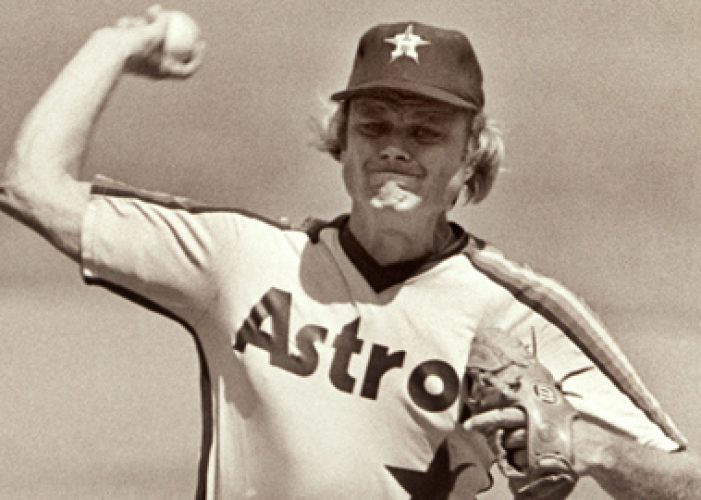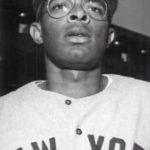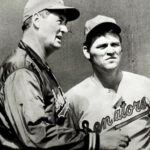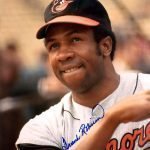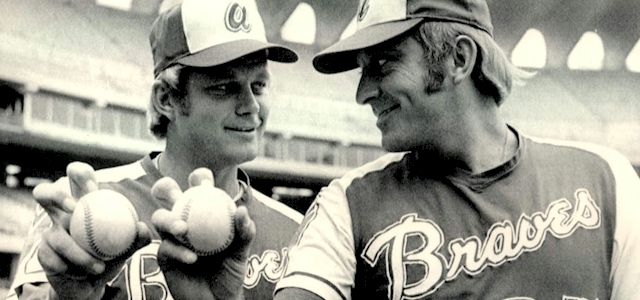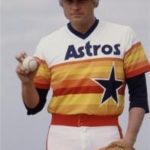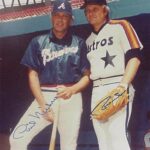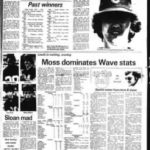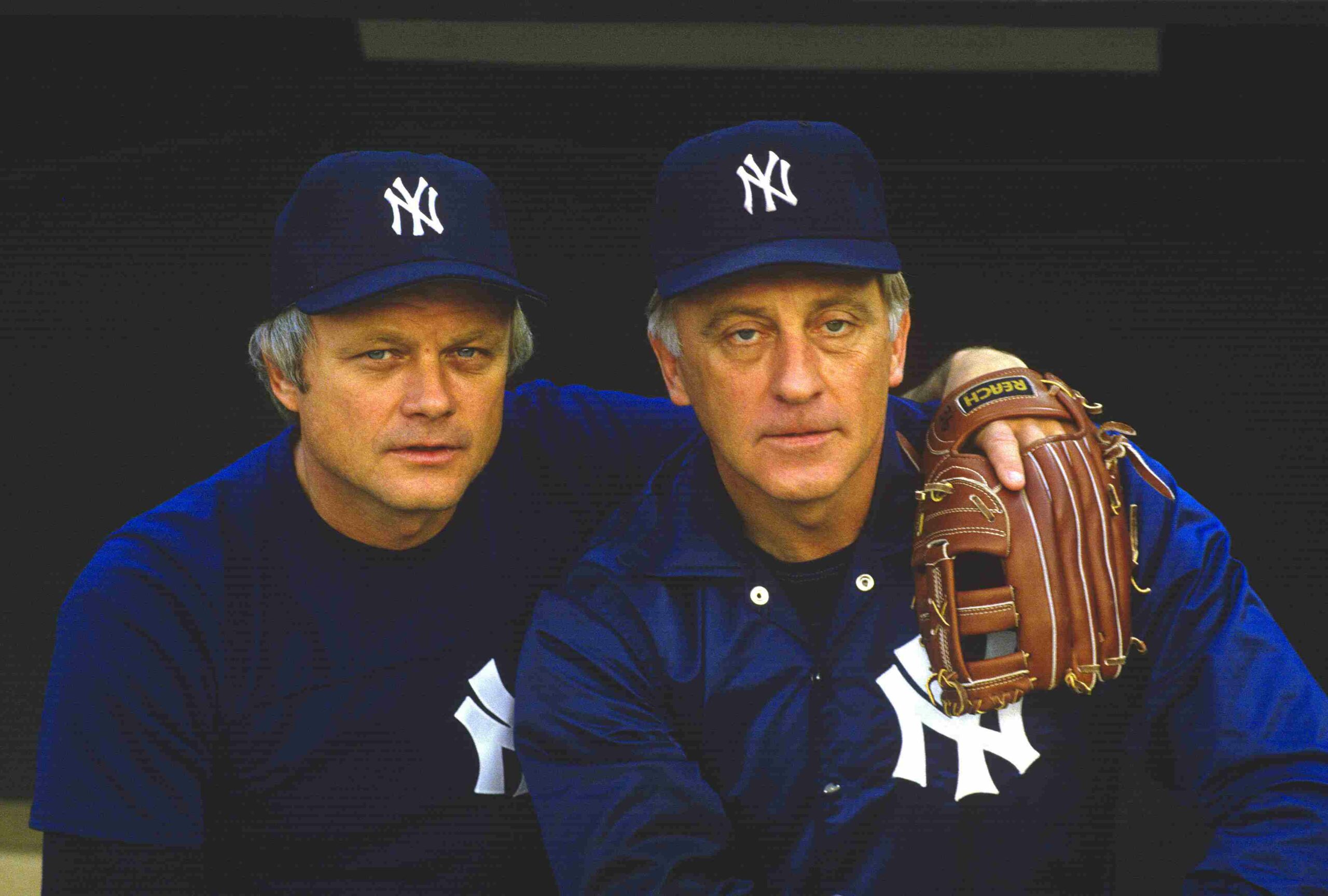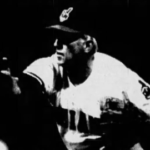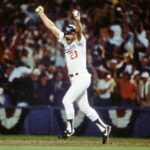Joe Niekro
Position: Pitcher
Bats: Right • Throws: Right
6-1, 185lb (185cm, 83kg)
Born: November 7, 1944 in Martins Ferry, OH
Died: October 27, 2006 in Tampa, FL
Buried: Cremated
Draft: Drafted by the Cleveland Indians in the 7th round of the 1966 MLB January Draft-Regular Phase from West Liberty University (West Liberty, WV) and the Chicago Cubs in the 3rd round of the 1966 MLB June Draft-Secondary Phase from West Liberty University (West Liberty, WV).
High School: Bridgeport HS (Bridgeport, OH)
School: West Liberty University (West Liberty, WV)
Debut: April 16, 1967 (10,184th in MLB history)
vs. PIT 0.1 IP, 1 H, 0 SO, 0 BB, 0 ER
Last Game: April 29, 1988
vs. BOS 3.0 IP, 6 H, 3 SO, 6 BB, 5 ER
Full Name: Joseph Franklin Niekro
Pronunciation: \KNEE-kro\
Relatives: Brother of Phil Niekro; Father of Lance Niekro
Nine Players Who Debuted in 1967
Reggie Jackson
Graig Nettles
Rod Carew
Johnny Bench
Tom Seaver
Jerry Koosman
Amos Otis
Sparky Lyle
Aurelio Rodriguez
Notable Events and Chronology
Intro
Like his more well-known older brother, Joe Niekro pitched deep into his 40s, utilizing a knuckleball to chew up innings as a staff workhorse. But Joe’s deliveries were not always of the legal variety. In 1987 the journeyman right-hander was caught red-handed with a nail file on the mound, earning him an ejection, fine, and suspension. He used his pitches, both legal and illegal, to win 221 games in a 22-year career. He and Phil Niekro hold the record for most career wins by brothers, with 539. On October 6, 1980, Niekro won a special playoff game to earn the Astros first post-season trip, defeating Los Angeles 7-1 in Dodger Stadium. He also enjoyed amazing success in the post-season, throwing 20 innings in three games without allowing a run. In spite of that, it wasn’t until his 19th season that he appeared in the World Series, winning a ring with the 1987 Minnesota Twins.
Unform Number
#48 (1967-1969 Cubs), #37 (1969 Padres), #19 (1970-1972), #36 (1973, 1975-1985 Astros, 1987-1988 Twins), #32 (1974), #31 (1985 Yankees ), #39 (1986), #47 (1986)
Replaced By
Charlie Lea, Freddie Toliver and Les Straker, in the Twins 1988 rotation.
Best Season
Niekro’s 2.47 ERA was second in the National League, and he pitched 16 complete games, five of them shutouts. His record was 17-12 with 270 innings pitched and just 64 walks.
Factoid 1
On July 2, 1970, Joe Niekro carried a no-hitter into the ninth inning against the Yankees. Horace Clarke singled to break it up.
Transition
June 29, 1966: Drafted by the Chicago Cubs in the 3rd round of the 1966 amateur draft (Secondary Phase); April 25, 1969: Traded by the Chicago Cubs with Frankie Libran and Gary Ross to the San Diego Padres for Dick Selma; December 4, 1969: Traded by the San Diego Padres to the Detroit Tigers for Pat Dobson and Dave Campbell; August 7, 1973: Selected off waivers by the Atlanta Braves from the Detroit Tigers; April 6, 1975: Purchased by the Houston Astros from the Atlanta Braves; September 15, 1985: Traded by the Houston Astros to the New York Yankees for players to be named later and Jim Deshaies. The New York Yankees sent Neder Horta (minors) (September 24, 1985) and Dody Rather (minors) (January 11, 1986) to the Houston Astros to complete the trade; November 12, 1985: Granted Free Agency; January 8, 1986: Signed as a Free Agent with the New York Yankees; June 7, 1987: Traded by the New York Yankees to the Minnesota Twins for Mark Salas; January 22, 1988: Granted Free Agency; February 9, 1988: Signed as a Free Agent with the Minnesota Twins; May 4, 1988: Released by the Minnesota Twins.
Strengths
Adaptability. Niekro learned the knuckleball from his brother later in his career. Prior to that, he had relied on a heavy fastball, curveball, and change. He really re-invented himself after the age of 35 or so. Of course, a nail file here and there didn’t hurt either.
Feats
On July 2, 1985, Niekro won his 200th game, against the San Diego Padres.
Love That Dome
Niekro benefitted from Houston’s spacious Astrodome, pitching his home games there for more than a decade. In nearly 200 games pitched in the Dome, Niekro was 73-50 with a 2.82 ERA. In more than 1,160 innings he allowed just 48 homers, or one every 24 innings pitched.
Take That, Bro!
Joe hit the only home run of his major league career off brother Phil, on May 29, 1976, in Atlanta. Joe held a 5-4 advantage over Phil in their head-to-head matchups. Twice, in 1973-1974 with the Braves, and on the 1985 Yankees, the two were teammates.
Joe Niekro’s Improbable Year
We’ve all read about the 1968 season ad nauseum. “The Year of the Pitcher.” Bob Gibson’s ERA of 1.12 was phenomenal. Denny McLain became the first 30 game winner since Lefty Grove won 31 in 1931. Don Drysdale’s 58 2/3 scoreless inning streak was remarkable. Luis Tiant’s 1.60 ERA for the Indians was outstanding. However, one man’s season was the most surprising of all. Joe Niekro, a then 23 year-old pitcher for the Chicago Cubs, won 14 games. Granted, it doesn’t seem like much compared to the other historical records listed above, but it is shocking nonetheless. Niekro posted an ERA that year of 4.31. He walked 59 hitters while striking only 65. Furthermore, Niekro allowed 10.37 hits per nine innings, as compared to Gibson’s 5.85. In a season that saw the National League hit .243 with an on-base percentage of .302, batters hit .294 against Niekro. The NL also had an OBP of .351 versus Joe. Despite those numbers, Niekro still won 14 games. Older brother Phil also won 14 games, but with an ERA almost two runs lower (2.59). Twenty National League pitchers won between 10 and 13 games with ERA’s lower than Niekro’s. One, San Francisco’s Bobby Bolin, had an ERA of 1.99, yet only won 10 games. The Cubs scored 612 runs in 1968, an average of 3.78 per game. However, that’s misleading considering Niekro’s record. In Joe’s 177 1/3 innings pitched, the Cubs scored 97 runs, or 4.92 per game. In non-Niekro innings, they scored 515 runs in 1,276 1/3 innings for an average of 3.63 runs per game, a full 1.29 less. This was a year when the Cubs tied the 1908 Philadelphia A’s record of 48 consecutive scoreless innings. It was also a year when Fergie Jenkins, on September 11 vs. the Mets, tied a record of five 1-0 losses in one season. How did Niekro get such luck? Niekro got off to a fast start, getting to four wins before anyone on the staff. His fourth win was a gem, a complete game shutout against Jim Bunning in Pittsburgh. The only run came on an Ernie Banks home run. However, Joe’s 4-1 record as of May 2 came with an ERA of 3.80, high for 1968. The Cubs run support was outstanding: averaging 6.33 runs per game. They scored seven runs for Niekro vs. St. Louis on April 14 behind an Ernie Banks three run homer. The Cubs also had explosions of 10 runs against Atlanta, on April 23, and eight runs vs. Houston on April 28. After his fifth victory, in Wrigley Field vs. the Dodgers behind seven Cubs runs (Billy Williams and Ron Santo contributing homers), things went badly for the younger Niekro. By June 21, Joe’s record was even at 5-5. Between May 21 and June 15, Joe pitched 23 innings and gave up 22 runs. The Cubs were still averaging 3.92 runs scored for him, but his pitching was dreadful. He gave up two of Willie Stargell’s three home runs on May 22. Except for an effective 2 2/3 innings of relief against the Astros on June 1, Niekro didn’t get another start until June 7, when he performed poorly. The right-hander did not last the first inning, giving up four runs in 2/3 of an inning vs. the Braves in Chicago. As fate would have it, Niekro was on the mound on June 21, when the Cubs broke their aforementioned scoreless inning drought. This began a period of overall credible pitching that would last until the beginning of September. In this stretch, Niekro’s ERA was a respectable 3.33, and the Cubs flexed their muscle behind him, scoring 4.21 runs per game when he was on the mound. Billy Williams won two games, getting two key hits vs. the Phillies on July 4, and hitting a grand slam at Forbes Field ten days later. Glenn Beckert, in the midst of a 27-game hitting streak, helped Niekro get his first save of the season in Philadelphia on July 1. The Cubs even moved into second place behind Joe on August 6, when he gave up two runs in seven frames vs. the Braves. Niekro was not immune to the wonder that was Bob Gibson in 1968. Gibby allowed only one run to the Cubs on August 18, for his eighteenth win and Joe’s seventh loss. Niekro also got his only relief win of the year when Willie Smith hit a tenth inning homer at Wrigley to beat the Braves. Niekro stumbled the rest of the year. This period actually began on August 31, when Joe issued seven walks in four-plus innings against the Astros. While Niekro got his fourteenth- and last – win against the Giants on September 4, he also gave up five runs in seven-plus innings, the Cubs scoring seven behind two run homers by Don Kessinger and Billy Williams. After giving up one run in one inning of relief against the Phillies, Niekro’s year ended when he gave up four runs in 3 1/3 innings vs. the Pirates. Gene Alley’s two-run single with the bases loaded helped seal Joe’s tenth loss of the season as the Cubs came up with nothing to support their starter. In spring training of 1968, Ron Santo noted that Joe Niekro was “on the way up. [He’s] looked great all spring.” The Sporting News featured Joe in their weekly Cubs report on both April 30 and May 18. The May 18th article was titled “Niekro New Cub Hill Whiz.” After Joe’s besting of Bunning in Pittsburgh, Umpire Chris Pelekoudas stated that Niekro had the one of the best sliders he’d seen in a long time. However, this early promise could not compensate for the erratic performance of 1968. Despite having the third most victories on the staff for the third place Cubs, Joe was traded to the expansion San Diego Padres soon after the beginning of the 1969 season. It wasn’t until 1977, that Joe Niekro would find consistency with the Astros, his unlikely 14 wins of 1968 almost a decade behind him. — Jeff Katz
@ET-DC@eyJkeW5hbWljIjp0cnVlLCJjb250ZW50IjoicG9zdF90YWdzIiwic2V0dGluZ3MiOnsiYmVmb3JlIjoiTGVhcm4gTW9yZSBhYm91dCB0aGUgdGVhbXMsIHBsYXllcnMsIGJhbGwgcGFya3MgYW5kIGV2ZW50cyB0aGF0IGhhcHBlbmVkIG9uIHRoaXMgZGF0ZSBpbiBoaXN0b3J5IC0gLSAtIC0gLSAtIC0gIiwiYWZ0ZXIiOiIiLCJsaW5rX3RvX3Rlcm1fcGFnZSI6Im9uIiwic2VwYXJhdG9yIjoiIHwgIiwiY2F0ZWdvcnlfdHlwZSI6InBvc3RfdGFnIn19@
Factoids, Quotes, Milestones and Odd Facts
Other Resources & Links

